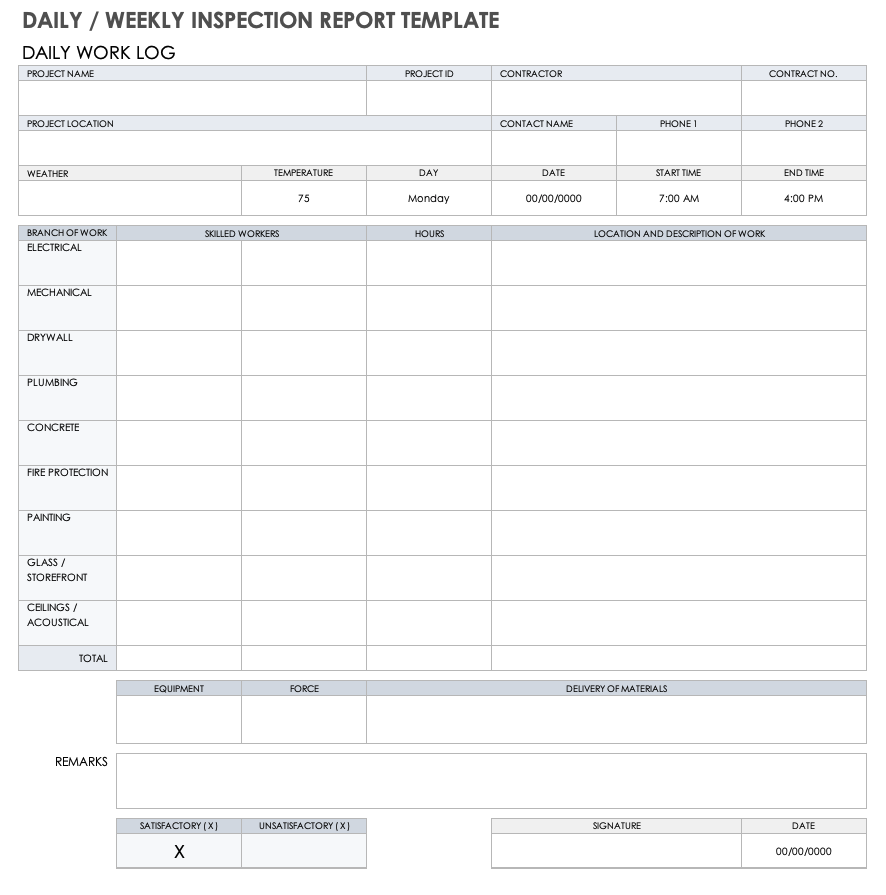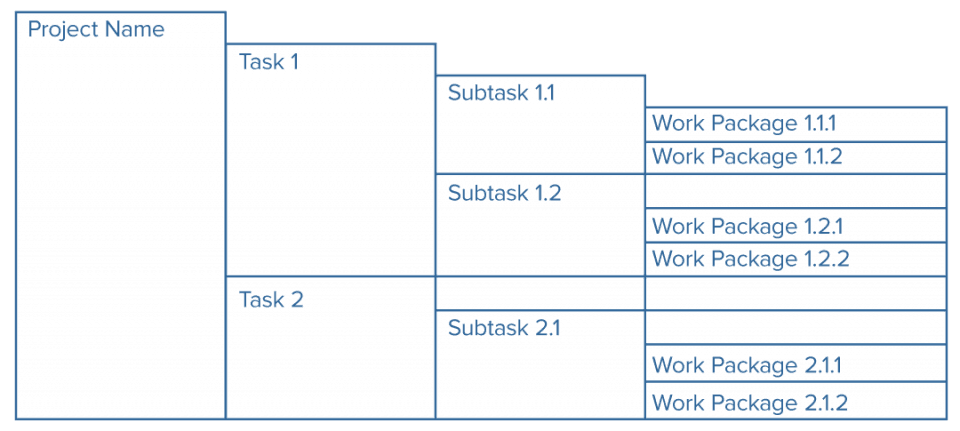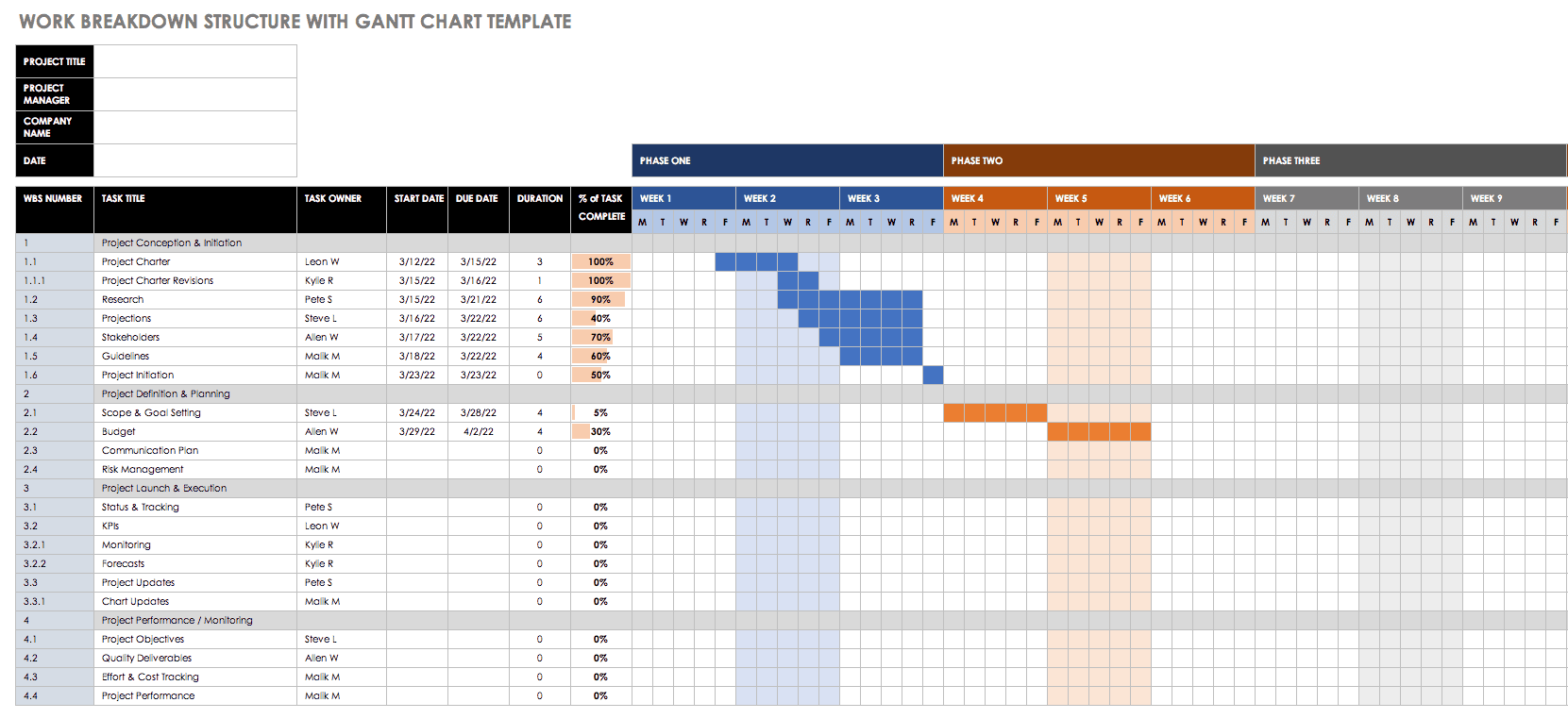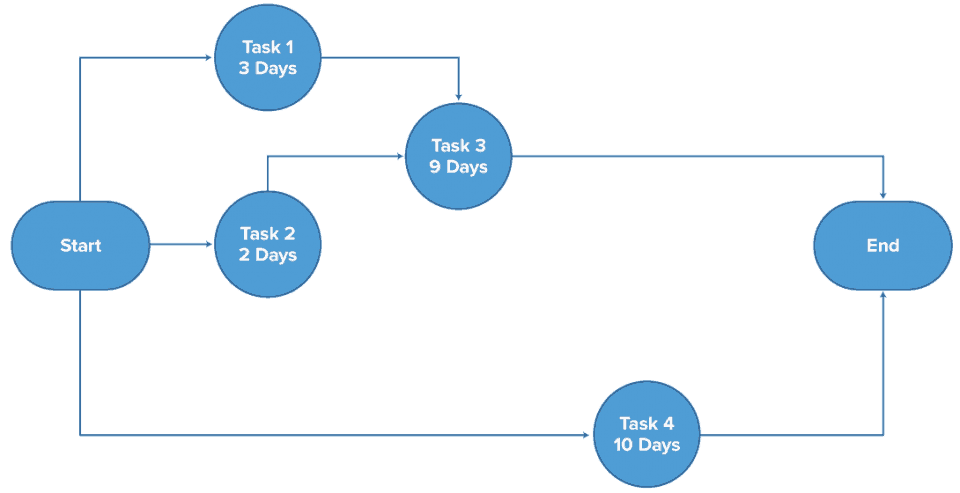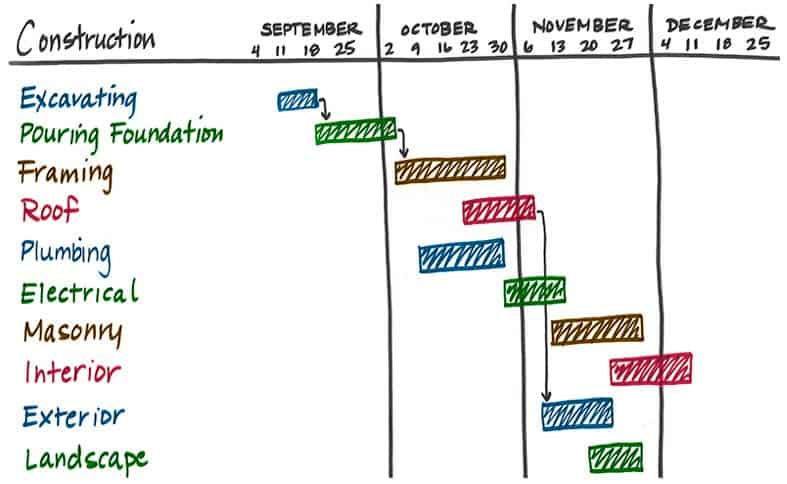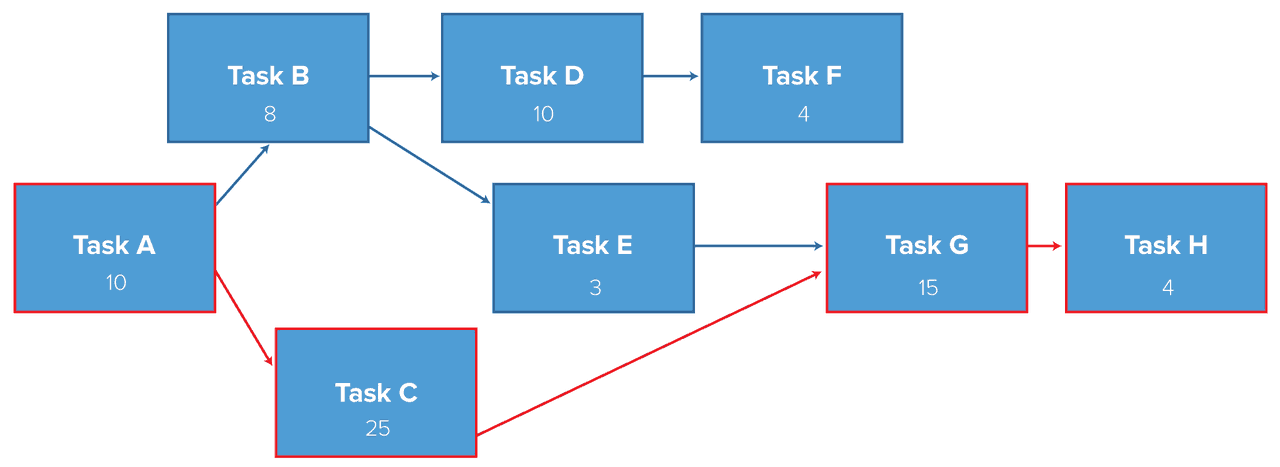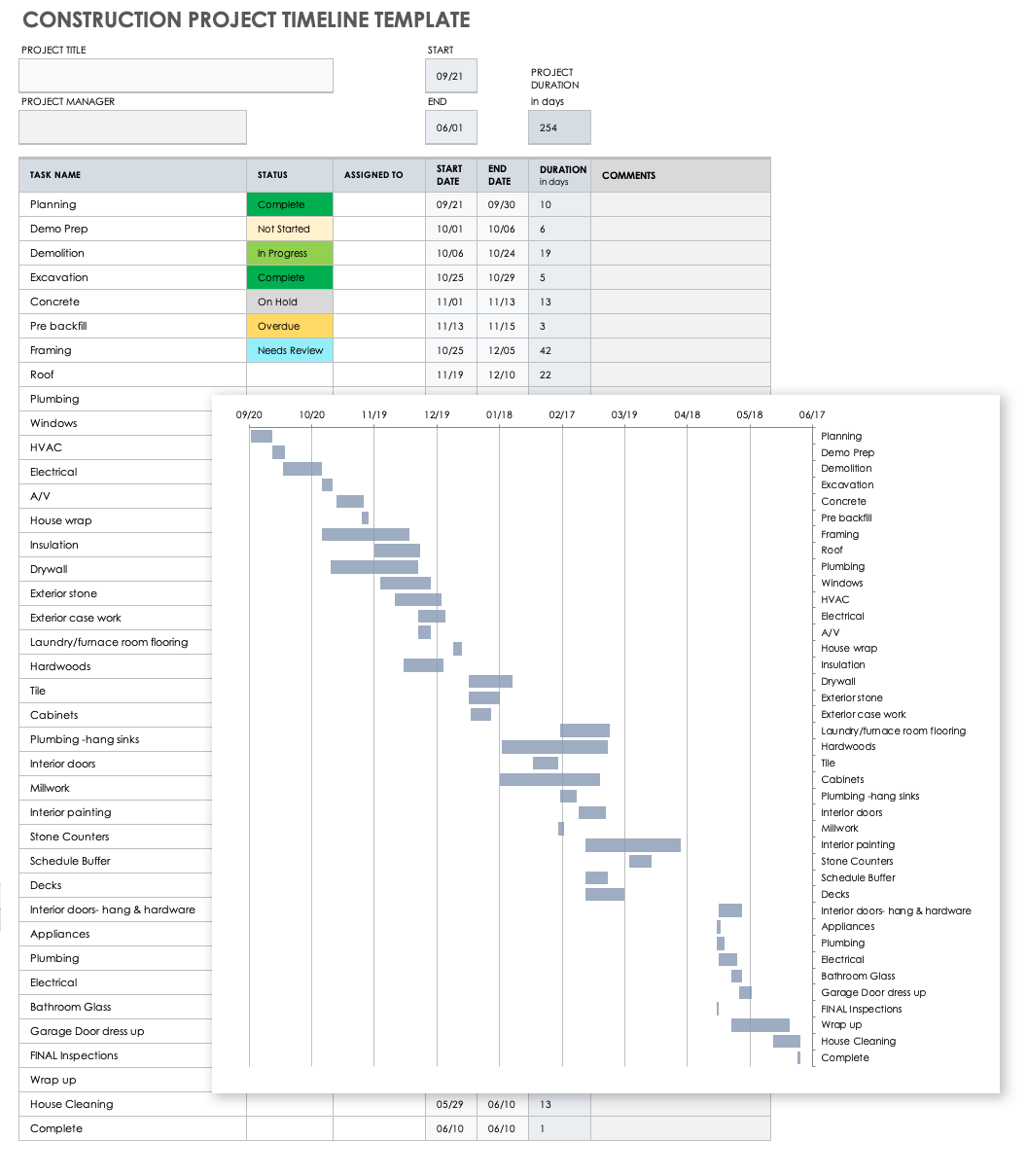Understanding What Is Critical about the Critical Path Method
When working on any project, from cooking to construction, you know that a certain minimum amount of time is needed to complete the project. This minimum time spans a series of steps that follow a logical order. For example, when baking a cake, these steps are mixing the cake batter, baking the cake in the oven, letting it cool, and frosting it.
A step can only begin once all preceding steps have been completed. The total length of time needed to complete these steps is the length of time needed to complete the project.
To continue with the cake example, you might ask, “What about preheating the oven?” That step can be completed while you’re working on the other tasks, so it doesn’t add to the total project duration. And, it won’t necessarily lengthen the project if delayed.
The only steps that count towards project duration are those that contribute to the single longest series from start to end: mixing, baking, cooling, and frosting. In project management, we call this series of steps the critical path, and the constituent steps are the critical tasks.
The critical path method is a staple of project scheduling used across many industries where time is money. Construction stakeholders can use it to visualize and determine a project’s duration, and also use it as a shorthand for talking about how duration is affected when project variables change.
Construction project managers everywhere recognize a CPM chart since they have to study the method to obtain Project Management Professional (PMP) certification. In project-related disputes, the CPM is a legal standard for measuring project delays, and it is often used in court cases as the basis of financial claims.
The critical path method was developed in the 1950s by Morgan R. Walker at DuPont and James E. Kelley Jr. at Remington Rand. It was first used in a skyscraper construction project in the 1966 building of the World Trade Center’s Twin Towers. After a 1993 bombing, the team that oversaw repairs to the facility, who were working on a very tight schedule, turned to CPM to organize the work.
CPM was originally done by hand with paper and pencil. However, technology — starting with mainframes and proliferating with PCs — has made CPM much easier. Software applications use algorithms that schedule project activities and generate a graphic representation of project tasks and their relationships. We will discuss the role of software in greater detail.
Builders use CPM on major projects because the method is complex and demands a high level of expertise. They rarely use it for smaller construction jobs like building a house. Owners and contractors of commercial and industrial structures rely on critical path to create a baseline for on-time performance and document delays and, if the project is late, potentially act as evidence to determine fault and monetary damages.
These templates for construction documentation and inspection reports can help you verify your progress.
Download Construction Documentation Tracker Template
Excel | PDF | Smartsheet
Download Daily/Weekly Inspection Report Template
CPM enables project managers to calculate the time and resources needed to complete a project. With good data, critical path can prevent scheduling problems and coordinate timely task performance by letting project managers know what needs to be done when. It allows supervisors to optimally schedule procurement and equipment usage and avoid overcrowding at the construction site. So-called stacking of trades, when too many specialty tradespeople are working simultaneously in a single area, hurts productivity and increases labor costs. So, good scheduling saves the project sponsors money in many ways.
Using the Critical Path Method with Other Scheduling Techniques
As CPM was emerging in the 1950s, the U.S. Navy and Booz Allen Hamilton developed a complementary scheduling technique called PERT (program analysis and review technique). Project managers use PERT to estimate durations for individual steps in a project and calculate completion time.
Today, the two techniques are used in tandem. CPM can also be used with a related technique called critical chain project management and with visual schedule trackers called Gantt charts. Let’s explore these tools.
PERT is essentially a probabilistic estimating technique for determining task durations. It was developed for U.S. Navy projects and implemented in the development of the Polaris nuclear submarine. PERT works using three duration estimates: the optimistic duration, the pessimistic duration, and the most likely duration. The optimistic duration is the shortest reasonable length of time necessary to complete the task, while the pessimistic duration is the longest reasonable length of time. The most likely duration falls somewhere in between.
PERT uses these three estimates to create a weighted average called the expected duration that tends to match actual task durations very closely. In this formula, the most likely duration is weighted more heavily than the optimistic and pessimistic durations. (You can find a handy calculator that will compute your expected value here.)
The outcome of a PERT analysis is called a PERT chart, an activity-on-arrow diagram that indicates expected task durations between project milestones. These expected durations can be plugged into a critical path model to identify the critical path and critical tasks. PERT is especially valuable to schedulers when tasks entail uncertainty and can be a helpful addition to CPM in those cases.
Another tool that schedulers use frequently with CPM is the Gantt chart, which was first used during WWI. The Gantt chart’s horizontal axis represents time, and bars represent project tasks. The Gantt chart represents activity relationships by showing how different bars line up with each other.
The Gantt chart is a great tool for showing expected progress: By drawing a straight line vertically through the bars and the horizontal axis, you can quickly determine what percentage of a task should be complete by a certain point in time. In conjunction with the critical path method, project managers can quickly gauge discrepancies between planned and actual start and end dates for project tasks. Scheduling software aids this process by displaying bars that represent critical tasks in red.
Finding the Critical Path in Construction Projects
Let’s return to the practical application of CPM to your construction projects.
For relatively simple projects with a few dozen tasks, you can determine the critical path with pencil and paper, and this exercise can help you better understand the concepts. In the real world, construction planners use software to do the calculations. Not only is this method faster, easier, and less prone to error, but it makes updating the critical path simple.
Of course, a CPM analysis is only as good as the data behind it. That means you need to include every project activity. You’ll identify these activities by developing a project work breakdown structure (WBS), which is a hierarchical representation of all project deliverables. The lowest level of a WBS is a work package, which comprises the tasks needed to complete one deliverable.
To make sure that the WBS includes all tasks involved in the project, cross reference it with construction documents detailing the work to be performed by all contractors, subcontractors, and vendors.
Download Work Breakdown Structure Template
Next, you’ll need to arrange the tasks in the order in which they should be performed, using task end points called milestones to connect them. This is the process of determining job logic, which is the network of relationships and interdependencies between tasks and milestones. It tells us when tasks can be performed relative to other tasks.
As James Kelley and Morgan Walker of consultants Mauchly Associates noted in their pioneering paper on critical path (1959), for each task, you must answer three questions:
- What task(s) immediately precedes this task?
- What task(s) immediately follows this task
- What tasks can be concurrent with this task?
Once you’ve answered these questions, you’ll be able to create a project task network or network diagram, which shows job logic for the entire project.
You’ll also need to estimate the time required to complete each activity (the duration). CPM works best with well-defined and highly repeatable tasks. On construction sites, this would be the type of jobs that are performed over and over, like excavating or dry walling.
When there is uncertainty or the activity is unique to the project (like the use of the world’s largest tunnel-boring machine that hit a steel pipe and delayed a Seattle road construction project by two years), PERT probabilistic estimates are helpful.
Try Creating Your Own Simple Critical Path Model
You can use this task and duration information to draft a very simplified CPM chart. The CPM chart reads from left to right.
- List all the activities from your work breakdown structure on the left side of your page.
- The horizontal orientation of your page represents time. Mark off intervals such as days.
- Know the precedence relationships of your activities (e.g., first you need to excavate before you can pour the foundation).
- Draw a horizontal bar on your chart for each task. Start the bar in line with the project day when the task will begin, and make the length coincide with the number of days it will take. (Since this is only an exercise, you can pick a single duration and not worry about the range of potential late/early starts/finishes.)
- For tasks with precedence relationships, draw the first activity’s bar, then draw the dependent activity’s bar farther to the right so that the bar does not begin until after the first activity’s bar ends. This represents that the dependent activity begins later in time. You can draw a vertical line between the ending of the first activity and the start of the second activity to make this more noticeable.
- For activities that can occur simultaneously, stack their bars in parallel above one another.
- You can now find the critical path by identifying the longest sequence of activities in terms of duration. To be sure, you can add up the activity durations on each path.
- You can also use an online tool to easily perform this calculation. Here’s a video that explains how.
Putting Critical Path Method Analysis to Work: Calculating Key Project Dates
In modern CPM charts, the tasks are represented by nodes, not by arrows (arrows only indicate dependencies). This type of chart is different from conventional charts, where arrows represent activities, and nodes indicate milestones.
(Note: The rise of scheduling software has entrenched the use of node diagrams because programs stopped offering arrow diagrams decades ago. While proponents say that node diagrams increase flexibility and match user preferences, the trend is somewhat controversial among engineers because critics contend that with this approach project logic is more vulnerable to manipulation.)
Identifying the critical path is at the heart of the CPM, and if you’re a construction project owner, this might be all you need to know. Construction project managers, however, will move on to slightly more complex analyses that add value to the critical path model.
A project manager will start by calculating the early start, early finish, late start, and late finish dates for each task. The early start and finish dates are the earliest dates on which you can start and finish a task. You calculate them by doing a forward pass through the CPM chart paths, which involves proceeding through sequential tasks in logical order to find the earliest dates on which work can begin and adding the task duration to find the earliest dates on which work can end.
The late start and finish dates are the latest dates on which a task can start and end if the project is going to finish on time. Calculate those by doing a backward pass through the CPM chart paths, which involves moving through sequential tasks in reverse order to find the latest dates on which work ends and subtracting the task duration to find the latest dates on which work starts.
Project managers use the terms free float and total float to describe the potential impact of non-critical tasks on those that succeed them. Free float is the length of time you can delay a task without affecting the early start date of a successor activity. Total float is the length of time you can delay a task from its early start date without delaying the project’s anticipated date of completion. You might also see these terms referred to as free slack and total slack; slack is synonymous with float.
Tasks on the critical path (critical tasks) have zero total float. They have drag, which is the length of time by which a critical task extends the project duration. If a critical task has no tasks in parallel, its drag equals its duration because that’s how much time it adds to the project completion date. If, however, a critical task does have tasks in parallel, then its drag is the lesser of two numbers: its own duration and the total float of the parallel activity with the least total float. The latter is so because compressing the critical task won’t reduce the project’s duration. The critical path will have shifted since another sequence of tasks will now have become longer.
Shifting a critical task introduces another concept: near-critical paths. Near-critical paths are those where total duration approaches that of the critical path. If the float on a near-critical path is exhausted, the near-critical path will become a critical path.
In a CPM chart, you might also see tasks with zero duration. These are called dummy tasks, and they’re used to illustrate complex interdependencies between tasks. You’ll also see endpoints indicating the milestones or deliverables you’ve achieved.
Gantt charts complement CPM scheduling by illustrating task sequences and timing and identifying critical tasks. Scheduling software will also generate percentage complete graphs, which can accompany Gantt charts to show how much of a task has been completed. Try this template to build a construction timeline incorporating CPM.
Download Construction Project Timeline
Since the critical path limits how quickly a project can be completed, project managers can attempt to shorten the duration of the critical path using two schedule compression techniques: crashing and fast tracking.
Crashing refers to adding resources to a critical task to decrease its duration, while fast tracking is performing some critical tasks simultaneously. However, these techniques are not always options: Some tasks cannot go faster with more resources, and others cannot start until preceding tasks have been completed.
When trying to determine the quantity of resources to add, project managers will track the relationship between the increased cost of providing these resources and the decreased duration of the project. This type of tracking is known as cost calculating, and it helps project managers select the optimum ratio of increased cost to decreased duration.
At the end of a project, a post-project analysis (sometimes called a project post-mortem) examines the as-built critical path (ABCP), which documents what actually happened during construction. It determines the causes and impacts of deviations from the planned project schedule and is a helpful learning tool. During legal disputes over construction, the as-built critical path is often an important piece of evidence alongside the original critical path.
The Critical Path Method’s Evolution: Modifications and Extensions
Since CPM originated, scheduling experts have sought to build on and modify it, creating new management techniques that seek to deliver greater time and cost savings. Two of the most widely used techniques are critical chain project management (CCPM) and event chain methodology.
Critical chain project management was introduced in 1997 by Eliyahu M. Goldratt, an Israeli management expert. It’s based on Goldratt’s theory of constraints, which says that a small number of constraints hold back project progress, and on Parkinson’s Law, which holds that work expands to fill the time available for its completion. The theory of constraints is a method for identifying the most important limiting factor or bottleneck that slows progress.
CCPM isn’t so much a supplement to the critical path method as an alternative to it, though it does draw from a concept similar to the critical path called the critical chain. The critical chain is a progression of tasks that, if delayed, will extend the project’s end date.
CCPM is based on the idea that the conventional critical path method wastes too much time by building buffers — additional time allowances to take varying work rates, resource availability, and external factors into account — into every single project task.
Statistically, while some tasks will take longer than expected to complete, others will be completed sooner than expected, thus canceling out some of the delay. CCPM assigns buffers to groups of tasks on the critical chain rather than to individual tasks and in doing so, reduces the total amount of buffer time built into the project schedule.
Another defining characteristic of CCPM is its systematic reduction of task duration estimates based on Parkinson’s Law. The idea is that reducing the time available to complete a particular task will prompt an increase in the work rate by instilling a sense of urgency in the workers. The project manager will also create an as-late-as-possible schedule, which has each activity beginning on its latest possible start date to increase this sense of urgency.
With the shortened task delivery deadlines in CCPM, attention shifts to eliminating constraints that might impact workers’ ability to meet deadlines. The foremost of these constraints is resource availability, which means that resource leveling and effective resource planning and management are emphasized in CCPM more than in the conventional CPM.
Event chain methodology is a software-enabled technique that uses mathematical models to conduct analyses for specific predetermined risks. It analyzes likelihood, impact, and possible time of occurrence for possibilities with negative impacts (risks) and those with positive impacts (opportunities). You can use event chain methodology to produce an event chain diagram, which overlays a Gantt chart with arrows that represent risks and opportunities. Event chain methodology helps project managers determine how risks might affect the project’s schedule and performance parameters and prepares plans for risk mitigation and response.
How Construction Planners Can Harness the Critical Path Method
For construction project managers, the CPM’s core function is to help everyone understand how individual tasks fit into the project schedule network and affect project duration. But that’s not all they can gain from the CPM.
Project scheduling isn’t only about planning dates for tasks. It’s also about matching resources and equipment with tasks. Matching these elements eliminates downtime (for example, waiting for workers to arrive). Procurement must also be planned ahead of time so that resources arrive on time. (When resources arrive too early, it can mean added costs for storage and maintenance.)
While paying attention to the critical path can help ensure that projects finish on time, going one step further to analyze the critical path and apply schedule compression techniques can actually decrease the project’s total duration. Fast tracking and crashing, for example, reduce waste caused by waiting for preceding tasks to be completed, perhaps because there are bottlenecks in the system. Proactive management can remove some of these bottlenecks by adding equipment or resources and by realizing that sometimes a preceding task does not have to be 100 percent complete before the successor task can begin.
Project owners, especially of large, sophisticated projects, often demand that project schedules identify the critical path and that ancillary construction activities such as procurement and resource management, are conducted with the critical path in mind. This is why the CPM is required learning in most project management programs. Project delays can be costly for owners who are eager to begin generating revenue in new facilities. Many owners will request detailed CPM schedules 30 to 45 days before the project begins, so they can monitor the actual pace of work.
Complicating the picture, however, is the fact that field supervisors often aren’t fans of overly detailed formal scheduling. They tend to feel it isn’t relevant to actual, fluctuating field operations, and therefore see it as a cumbersome distraction. They may even prefer short-term, seat-of-the-pants scheduling.
But, beyond small, uncomplicated projects, CPM is essential: Major construction has too many moving parts to track without a detailed schedule. Big construction firms will typically use formal schedules for complex structures that require extensive coordination. The widespread use of mobile devices and cross-platform software has also helped formal scheduling proliferate. Field supervisors can easily access schedule information on mobile devices.
CPM is a math intensive technique, and while the calculations aren’t technically difficult, the sheer number of tasks in complex projects can make them onerous. Software calculations, thus, take a lot of the pain out of the CPM, as the algorithms in critical path scheduling are complex.
Construction managers will also be able to differentiate between two broad categories of scheduling techniques:
- Time-oriented scheduling is the standard model, and focuses on project completion times as a function of precedence relationships. It’s the default approach for most scheduling software.
- Resource-oriented scheduling focuses on the effective scheduling and provision of resources. Construction planners typically call on it for projects where resources are limited to mitigate those constraints. Otherwise, expensive bottlenecks are likely to emerge.
It’s important to determine which type of scheduling is appropriate before scheduling gets underway. This is because time-oriented techniques like the critical path method may be completely redundant for a project with limited resources, as the resource shortage becomes a more important hindering factor than the pace of work.
Time-oriented scheduling is generally the default approach, but many construction managers actually use hybrid approaches that limit specific resource use in otherwise time-oriented schedules. Scheduling software assists in building these models.
Scheduling techniques can make varying usage of the float in a schedule network diagram. We’ve already talked about the as-late-as-possible schedules used in critical chain project management; the effect of these is to introduce a sense of urgency among workers. Conversely, you might have an as-early-as-possible (sometimes called as-soon-as-possible) schedule, perhaps to compensate for uncertainty over the number of working days or to prepare when you know bad weather is coming.
Different graphical techniques represent schedules. One option is a time-scaled schedule, where the schedule is scaled and activities are sized according to duration. Gantt charts, which we’ve discussed earlier, are obviously a favorite. Some schedulers will also prepare percentage complete charts, occasionally with lines to represent both as-early-as-possible and as-late-as-possible schedules. With resource-oriented scheduling, planners often plot graphs for expected resource use.
Taught widely at the university level, the CPM has continued to prove its worth as a scheduling technique despite some proven shortcomings, and it has evolved, according to a technical paper by Ali Jaafari of the University of Sydney in the Journal of Construction Engineering and Management.
In a landmark Harvard Business Review article (1963), authors F.K. Levy, Gerald Thompson, and Jerome Wiest note that the requirement for contractors working on government projects to use CPM fueled much of the method’s early development. Among these early developments were efforts to create resource-oriented scheduling algorithms called SPAR and RAMPS. At around the same time, a variant of the PERT method called PERT/COST was developed for military projects; it added resource cost considerations to the traditional PERT schedule.
Cautions, Caveats, and Tips for the Critical Path in Construction
Despite universal use of the critical path method, construction pros say there is much confusion around it, especially among owners and architects. Getting the maximum benefit from CPM requires a healthy dose of common sense and proactive management practices.
First and foremost, the accuracy of the critical path model depends on the quality of information you feed into it. Incomplete or unrealistic data will inevitably lead to an inaccurate critical path analysis. In other words, you must use common sense when employing CPM.
Moreover, the CPM model can’t tell whether you have forgotten some activities or whether your duration estimates are accurate. Rather, you must employ careful attention to detail and critical judgment on the part of planners. Inaccurate estimates and omissions early in a project lifecycle can have a big impact, as one compounds the effects of errors.
CPM also can’t identify tasks that might benefit from crashing. Rather, determining whether you can decrease task durations by adding resources requires an experienced construction manager.
Remember to check assumptions about resource availability, so you know whether resource-oriented scheduling techniques might be a more appropriate choice than purely time-oriented techniques.
Insufficient understanding due to lack of expertise is another common obstacle of CPM.
Civil engineer and construction manager M.A. Baki notes that CPM execution suffers when schedulers do not have a complete understanding of the system as well as some construction field experience. He also says successful implementation requires support from top management.
CPM pros are also mindful that it’s not a one-and-done system. Conditions vary, project scopes change, and estimates are revised. Users must update the critical path model to take these into account, so commitment to the method and following through are essential.
Revisions are inevitable, but they’re also expensive and time consuming. If the critical tasks aren’t affected, the changes will not delay the project. But to know for sure, you have to go through the revisions process.
Largely reflecting the degree to which it mystifies and intimidates those who have not mastered it, CPM in some circles has become little more than a contractual formality. To them, it’s useful for calculating project duration, and not for engaging in active management strategies, such as diverting resources during construction.
This isn’t new behavior. In an influential 1974 MIT survey of CPM use by the top 400 construction firms, author Edward Davis found that the primary use of CPM was for planning rather than for control, and that only a small proportion of users felt they could harness its benefits. Conducted again in 1990 and 2003, the survey’s most recent results revealed that the use of CPM for project control has been growing due to technology advances. Construction firms are also using it more for preparing estimates and bids.
“This [break in communication] may entail major differences between the original plan based on which the project was bid and the eventual plan based on which the project is to be constructed. This issue can be further exacerbated during the construction phase when the communication lines between the project scheduler or the project manager and the project superintendent are broken. Superintendents often revise their means and methods and activity sequencing in the field to perform a certain task; however, the project scheduler or manager may fail to incorporate the changes into the CPM schedule,” Chilmeran says.
He says that inaccurate CPM schedules can often be tied to a few causes:
- Underestimating the level of effort required to complete a certain task. “For example, an international or national contractor working on a project in a new region may underestimate the level of effort required to obtain permits in that region,” Chilmeran says.
- Lack of subcontractor feedback during the development of the baseline CPM schedule. “Time pressure on contractors when the schedule is prepared may prompt them to make assumptions about subcontractor work,” Chilmeran says.
- Lack of detail in the construction CPM schedule may prevent accurate modeling of the work sequence.
- Manipulation of project logic for a favorable position with regard to a potential claim, which may occur during the course of construction.
Critical Path Method Best Practices
Carson says following best practices can prevent common mistakes with CPM schedules. He sums these up as follows:
- Learn from history.
- Collaborate with the project/construction management team to plan in detail the way to proceed.
- Model the entire scope of work, including owner responsibilities that could delay the project.
- Model the procurement process in the schedule, so you can monitor submittals, approvals, ordering fabrication time, and delivery.
- Model all non-project work that could affect completion of the project.
- Within the limitations of the location, carefully model the plan for resource use, so the schedule shows a clear flow of resources throughout the project.
- Provide enough detail in the schedule to use mostly finish-to-start logical relationships (i.e., one step must finish before the next can start).
- Allow adequate time for development of the schedule, quality control review, and claims avoidance review, as well as updates and analysis.
- Use an integrated cost/schedule/risk approach with continuous risk assessment and monitoring.
Reminders from the Pros on Using Software for the Critical Path Method
Scheduling software has made calculating the critical path a lot easier. These applications speed up critical path and reduce the risk of mathematical error. They can also quickly identify the critical path and critical tasks, and can instantly process updates to the total project duration. In addition, they figure out float times for non-critical activities.
Some software can communicate possibilities for reducing task duration and will allow you to model the effects of schedule compression techniques like crashing and fast tracking.
With mobile interfaces and cloud storage, software makes CPM charts easy to share and to access in the field. Both free and paid versions of scheduling software with CPM functionalities exist. An enterprise resource planning solution may be helpful if the critical path affects more than a single project.
But scheduling experts warn that software can give a false illusion of CPM mastery.
“CPM schedules are so simple to develop with modern software that everyone thinks if they can use the software, they are automatically a scheduler,” says Carson. “This is especially true of entry level engineers who are naturally good with software. But good CPM methodology requires a decent understanding of how it works and what is important. That’s why certifications such as the AACE (Association for the Advancement of Cost Engineering) International’s PSP (Planning and Scheduling Professional) are so important; they are focused on the methodology and good practice rather than the software.”
In fact, some CPM experts say the apparent ease of software tools may even be contributing to the deterioration of schedule quality by making it possible to create schedules without formal training and true understanding of scheduling concepts, Engineering News-Record (ENS) reports.
“It’s the same analogy as with Microsoft Word,” civil engineer and project management consultant Jonathan Japka was quoted as saying in Engineering News-Record. “Just because I know how to use the software doesn’t mean I know how to write,” he emphasizes.
The Critical Path Method and Lean Aid Construction Productivity
Field supervisors who find the CPM of little use in the field have a point. As a scheduling technique, CPM aims to help manage the project’s duration from the top down in the long term, and it isn’t suitable for detailed, short-term planning. When long-term scheduling goals don’t easily translate into short-term work planning, it’s easy to feel that CPM scheduling is out of touch with work on the construction site.
One solution is a Lean construction project planning method called the Last Planner® System (LPS). The name derives from how it brings construction foremen — the “last planners” of project work — into the construction-planning conversation as scheduled work draws closer.
Wanless says that front-line staff have a deep understanding of the work involved. “I talk to people who can explain the process. I always seek out the oldest guy on the team, and I ask lots and lots of questions. Through this process, I come up with the schedule,” he says.
The LPS’ core principle is that some degree of inaccuracy is unavoidable in long-term planning. Moreover, planning becomes less accurate and relevant the farther in advance you do it. In this context, the detailed, theoretical scheduling generated by the CPM can become a form of waste, since project managers will have to adjust or even redo the schedule as the work rolls around.
The Last Planner System solves this problem by progressively minimizing the level of planning detail for work farther in the future and increasing the level of detail as scheduled work approaches. So, planners might initially describe the work in a master plan, which dwells mainly on broad project milestone dates and less on how you should reach them. As work draws closer, planners flesh out their projections with phase planning, make-ready planning, and weekly work planning, which involves low-level, highly detailed scheduling for individual tasks that are due for completion soon. The last planners are brought on board as early as the master planning phase, and they take increasing responsibility for detailed work planning as due dates approach.
The Last Planner System, with its progressively increasing levels of detail in work planning, makes long-term CPM goals relevant to the short-term performance of work in the field. Embracing Lean’s value of decreasing waste, you can also generate savings by reducing time spent reworking plans. The last planners add valuable insight on site conditions, human and material resources, and workflows. This aids accuracy of estimates and facilitates coordination among construction trades. That, in turn, helps different teams work to schedule. Of course, it’s important to consistently update the critical path model using insights provided by the last planners.
As a lean management methodology, the Last Planner System can help decrease the duration of the critical path. Core Lean objectives, such as eliminating waste through constant improvement, (kaizen) can shave time off critical path tasks. Also, allowing the project customer to determine value can help project planners decide whether some tasks are really necessary and whether value might be better added elsewhere.
Just as importantly, the increased coordination between field managers and their off-site supervisors fosters an atmosphere of teamwork and also encourages accountability to meet the CPM schedule goals. Rob Sepanek of The Beck Group, a company that provides architecture and construction services, praises the Last Planner System for creating a team atmosphere, a more predictable workflow, and a culture of accountability. (Engineering News-Record has an on-demand webinar about blending LPS and CPM, featuring Sepanek, Walter Terry, Vice President of Project Planning for development and construction company Skanska USA Building, John Livengood, President, AACE International and Managing Director, Navigant, and Richard Korman, Deputy Editor of ENR.)
Chilmeran says that the prominence of CPMs as evidence in legal disputes about construction has worked against its acceptance and best implementation. “Both owners and contractors should treat the CPM schedule more like a planning tool and less like a legal instrument. This entails actions from encouraging a collaborative environment between both sides to developing a realistic CPM schedule that you can use to successfully plan and deliver the project,” he says.
With the detailed planning rounds in Last Planner, project participants often gather and create schedules that are based on critical path. “As they’ve done this pull planning, they have realized it’s a great system that leads to a more accurate schedule. They are focusing on detailed work package planning and defining the job in smaller pieces,” he says.
In addition, Last Planner improves the data in the critical path model by involving all participants, Cherf says. On sophisticated construction projects, subcontractors perform 80 percent of the work, he says, and in the past, fragmentation has limited the flow of information.
In another parallel to Lean, builders and project managers learn a lot from construction post-mortems, which can show when, where, and why delays occurred. An accurate CPM model can help participants analyze how well the construction manager responded to delays caused by scope changes, labor strikes, or the weather.
Reality Checking Your Critical Path Method Construction Schedule
A CPM schedule is only as good as the task information you feed into the critical path model. If you’re a construction project manager or scheduler, ask yourself these questions to do a reality check on your schedule:
- Are Pre-Construction Tasks Identified and Included in the Schedule? Construction projects don’t start with groundbreaking: They begin much earlier, with the submission of blueprints and construction plans to obtain permits. These activities will add time to the project — in some cases, months. Make sure they’re included as project tasks when you’re putting together the critical path model. Many of the tasks in the construction phase are technically successor tasks to those in the pre-construction phase.
- Are Tasks Accurately Linked to Predecessor and Successor Activities? Make sure that all the tasks have all their dependencies accurately represented, especially if you’re working with CPM software. Doing this improves the accuracy of the project plan and the reliability of the critical path calculations. It also improves coordination at hand-off points after task completion and reduces the likelihood of embarrassing errors.
- Is the Critical Path As Efficiently Sequenced As It Could Be? Since the critical path determines project duration, refining the sequencing of critical tasks is a common way to decrease the critical path’s duration. Ask, for example, whether two tasks in sequence have a finish-to-start relationship or whether one could begin while the other is still under way. Also, see whether items with long lead times can be delivered and stored before their successor tasks begin.
- Are Task Duration Estimates Consistent with Past Construction Experience? PERT-style duration estimates are generally reliable, but ask construction supervisors with experience in particular project types whether task durations need adjustment. Sometimes, local factors, such as delivery times, weather conditions, and even cultural values around work can skew durations depending on where construction is taking place. Ground estimates in local knowledge of past projects.
- Are the Resource-Workflow Relationships Realistic? As we’ve seen, time-oriented scheduling is default practice for most construction projects, but it pays to examine whether some resource-related assumptions are actually valid. Investigate whether local manpower can meet your staffing needs and whether you have planned for trades to work side by side in a way that is safe and realistic given space constraints. Also, be wary of conventional logic that increased manpower is inversely proportional to task duration. While this is generally true, the relationship is not always as linear as some supervisors seem to think. For example, at a certain point, more workers will cause crowding and confusion that decrease productivity.
- Are Buffers Built in for the Inevitable Delays? In a CPM schedule, each critical task often includes some buffer time for inclement weather, labor strikes, and other risks that might slow down the pace of work. If the critical path doesn’t have buffers, the construction team needs to be able to increase the pace of work to make up for delays by working overtime, adding shifts, or working weekends.
- When Will the Project Be Considered Complete? When presented with a CPM schedule, a project owner is likely to focus on the project end date. Make sure that the builder and owner share an understanding of what constitutes a completed project. Is construction considered complete when the building is ready to be put into functional use, or simply when it is structurally complete?
Improve Critical Path Method in Construction with Smartsheet for Construction
From pre-construction to project closeout, keep all stakeholders in the loop with real-time collaboration and automated updates so you can make better, more informed decisions, all while landing your projects on time and within budget.
The Smartsheet platform makes it easy to plan, capture, manage, and report on work from anywhere, helping your team be more effective and get more done. Report on key metrics and get real-time visibility into work as it happens with roll-up reports, dashboards, and automated workflows built to keep your team connected and informed.
When teams have clarity into the work getting done, there’s no telling how much more they can accomplish in the same amount of time. Try Smartsheet for free, today.

